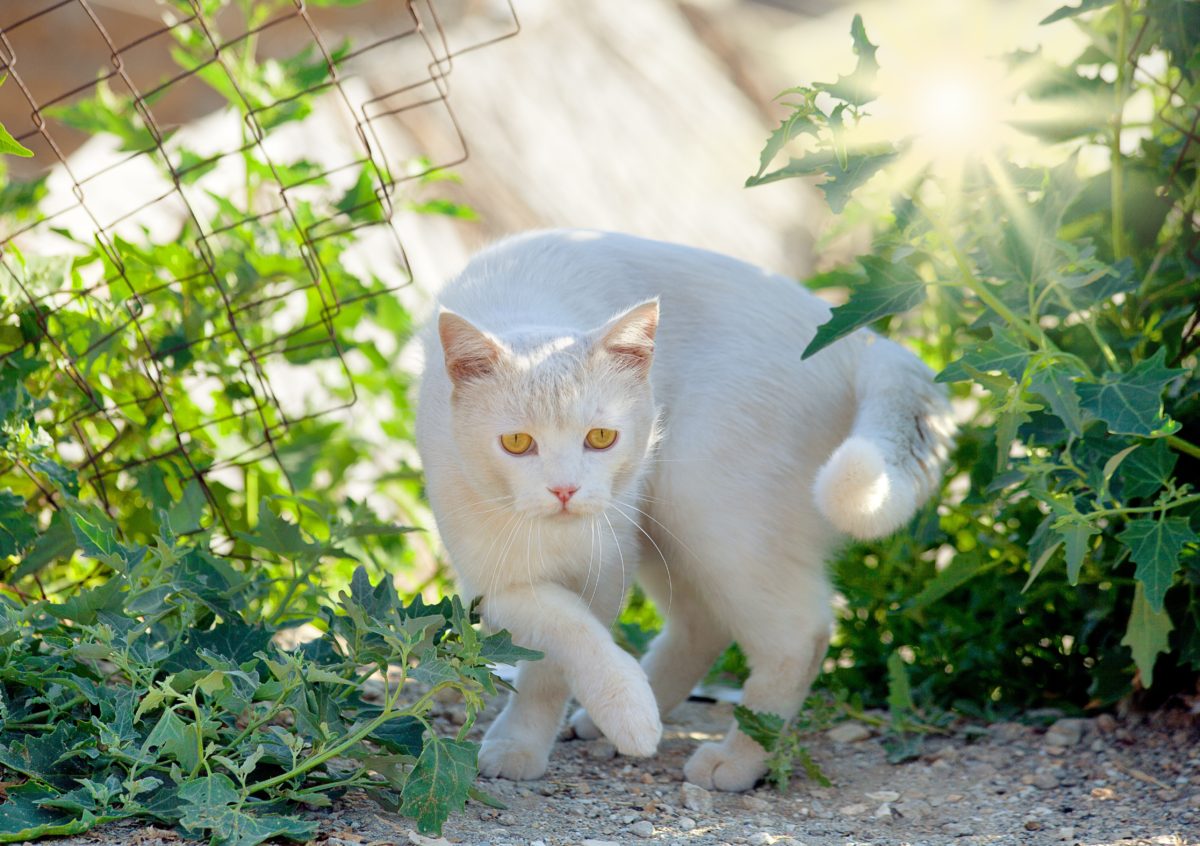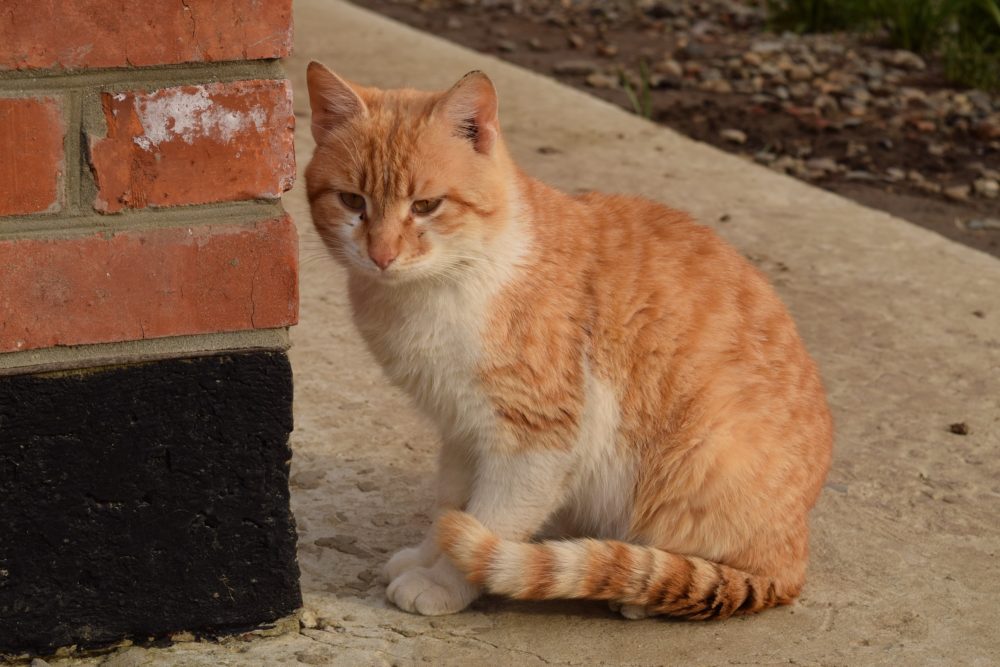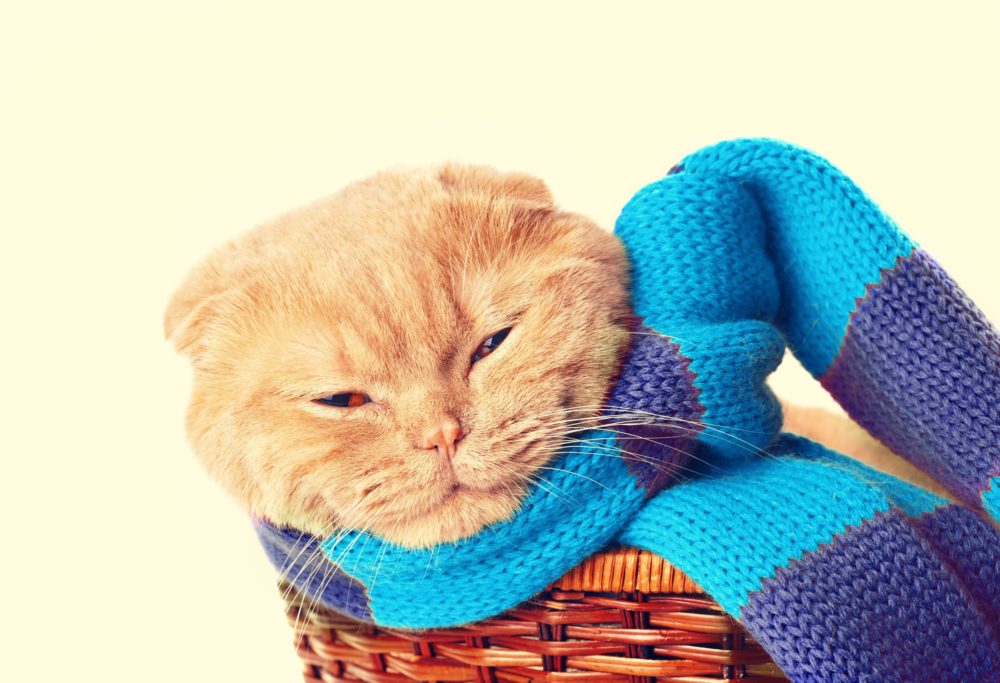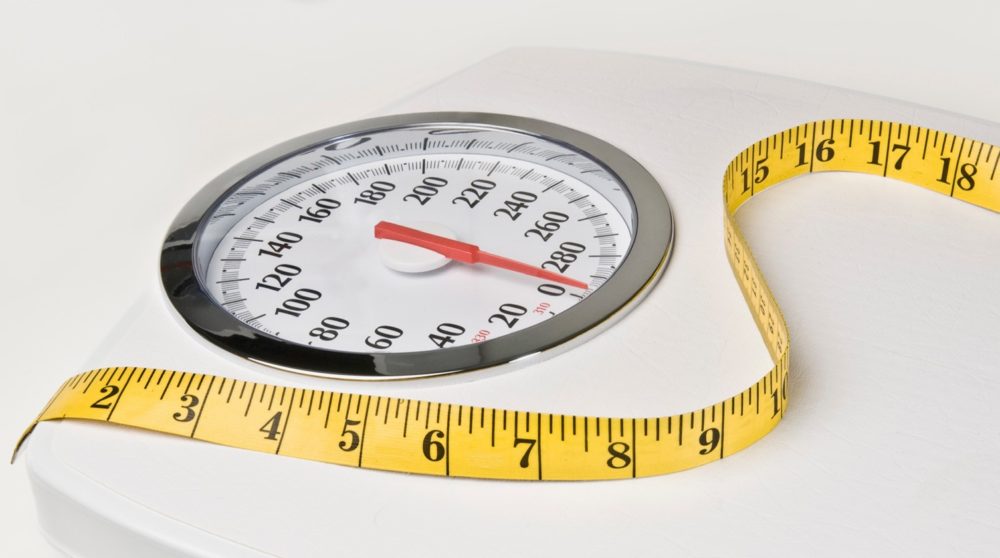
How to weigh your cat
There are several ways that you can weigh your cat:
1. Take your cat to be weighed at the veterinary
Your veterinary practice will have scales specifically designed to weigh cats. These scales will have precise graduations for accurate readings. The scales will have a large area suitable for your cat to sit on whilst being weighed.
2. Purchase your own cat scales to weigh your cat at home
If your cat’s weight needs to be monitored closely it may be worth investing in having your own cat scales at home. This will allow you to monitor your cat’s weight accurately and as often as you need to. There are various cat scales available to buy online, for cat scales available on Amazon please click here.
3. Weigh your cat at home using baby scales
Many cat owners weigh their cat using baby weighing scales. These scales will have small increments suitable for monitoring any changes in your cat’s weight. Sites such as eBay and Gumtree are great places to find second-hand baby scales.
4. Weigh your cat at home using digital luggage scales
To weigh your cat using digital luggage scales, place your cat in the cat carrier and use the luggage scale to measure the total weight. Then remove your cat from the carrier and weigh the empty carrier on the luggage scale. The difference in the two measurements will be the weight of your cat.
5. Weigh yourself with your cat
This method is similar to the luggage scale method above. Firstly, weigh yourself holding your cat then weigh yourself without your cat. The difference in the two measurements will be the weight of your cat.
6. Place cat treats on an electronic bathroom scale
Although this final idea is a bit of along shot, many cat owners have found this method successful to weigh their cats. By placing some treats or even their cat food on scales which require you to step upon, your cat may be quite happy to stand on the scales while their weight is being recorded!
Methods 4 and 5, using luggage scales and weighing the cat with you, will not give such a precise reading as other methods. But using the same method of weighing will give you consistency and a guideline. Any notable changes in the measurements will alert you to any changes in your cat’s weight. If you notice any changes in your cat’s weight or have any concerns regarding your cat’s health contact your veterinary.
How much should my cat weigh?
This will vary by breed, age and frame. For example, Siamese cats tend to be smaller and may only weigh around 5 pounds where as Savannah cats can weigh up to 15 pounds. As a guideline, the average domestic cat should weigh around 8 to 10 pounds. Your vet will be able to advise on the ideal weight for your cat’s breed, age and frame.
Apart from weighing your cat, it is equally useful to be able to assess your cat’s weight by feel and by sight. This is known as a Cat condition score chart. Regularly checking the body condition of your cat will be useful in monitoring your cat’s weight and health therefore helping your cat remain healthy.
Cat Condition Score chart
Severely Underweight /
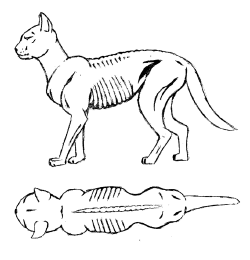
Individual ribs, spine and pelvis all highly visible and can be seen from a distance
Complete absence of any fat
Lack of muscle mass
Exaggerated prominent waistline when viewed from above
No under belly, abdomen tucked up
Thin
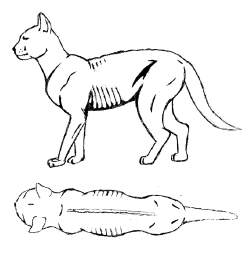
Ribs, spine and pelvis easily seen and felt
Little body fat
When viewed from above, waistline can be seen
Thin neck
No under belly, abdomen tucked up
Ideal Weight
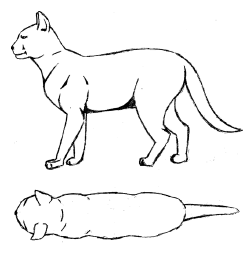
Ribs and spine can be felt and may or may not be seen
A clear waistline can be seen
Good muscle mass
Underbelly visible from the side
Overweight
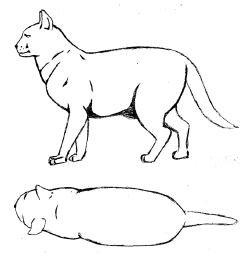
Ribs and spine can’t be seen, may be felt
Thick layer of overlying fat
Large fat pads present over the back legs
When viewed from above there is little or no waistline
Underbelly clearly visible and wobbles when cat moves
Rounded chest and belly
Obese

Ribs and spine are impossible to feel and not visible
A layer of very thick overlying fat
Fat deposits on tail
No waistline when viewed from above
Back is broadened when viewed from above
Obvious fat over the lower back, legs and around the face
Under belly hangs down and sways when cat moves
If your cat appears in any condition apart from ‘ideal’ seek advice from your veterinary. Monitoring your cat’s weight will be a good indicator of your cat’s health. Any changes should be checked out by a veterinary.
Weight loss in cats
If a cat is losing weight when there has been no change in diet or exercise regime, this can be an indication of a chronic disease. Weight loss will very often be the first symptom which is why is it important to monitor weight. Early detection can improve the chance of curing an illness or managing a condition effectively.
Weight gain in cats
Similarly, any weight gain in cats needs to be checked out by a veterinary. Statistics show that obesity in cats is increasing at a worrying rate. 53% of American cats are affected by obesity. Overfeeding and lack of exercise can contribute to weight gain. As owners we think we are being kind when we give our cats lots of treats, but the reality is that being overweight can lead to health problems. Conditions that can arise from excess weight include:
- Type 2 diabetes
- Reduced liver function
- Heart disease
- Joint pain
- Arthritis
- Increased risk is anaesthetic or surgical procedures are required
- Overweight cats can get old before their time – less fun for you and them.
If your cat is overweight, please seek the advice of your vet to rule out any underlying medical conditions and to seek advice about how best to change your cat’s diet.
A healthy cat is a happy cat

A cat that is healthy will able to lead its life to the fullest and be less prone to health problems and illnesses. Being the correct weight will mean they can play, hunt, scratch and climb to the best of their abilities – just as a cat should.
To keep your cat at its ideal weight your cat needs to eat the right diet and get enough exercise to stay fit and healthy.
Diet
Cats need meat in their diets as they need the proteins found in meat – they can’t be vegetarians. The dietary requirements of your cat will vary through different stages of its life. For example, kittens need different food from older cats, because their bodies are still growing. Cat food manufacturers offer a wide variety of foods specifically targeted for each stage.
We all love to treat our cats, but it is important that treats do not make more than 10% of their diet. Too many treats in addition to their daily meals will simply result in an overweight cat. It is easy in our busy lives to feel guilty for not spending enough time with our pets and compensating for this guilt by over-feeding treats. Relaxing and spending time with your cat is what will make your cat happiest.
How often should I feed my cat?
Cats prefer lots of small meals to one large one. Feral cats typically eat between 10 and 20 small meals a day with time in between spent foraging for food. Stimulating this behaviour in domestic cats can be done by providing food puzzles, hiding food for cat to find and throwing dry food for the cat to chase. This will provide good exercise and helps prevent obesity and behavioural problems. If your cat is eating too much and putting on weight, it may be better to feed them two meals a day, instead of leaving food out.
How to prevent weight gain in cats
- It is not advisable to feed human leftovers to cats. Not only is some human food toxic to cats, eating scraps encourages your cat to misbehave during mealtimes, can unbalance their diet and cause weight gain.
- Monitor the amount of treats your cat has.
- Food puzzles make your cat work for its food. This helps them mentally and physically.
- If you live in a multi cat household, ensure that one cat isn’t eating the other’s food.
- Always feed the recommended food allowances for your cat. If you are unsure then weigh it out.
- Encourage your cat to be active by playing with him more.
Exercise
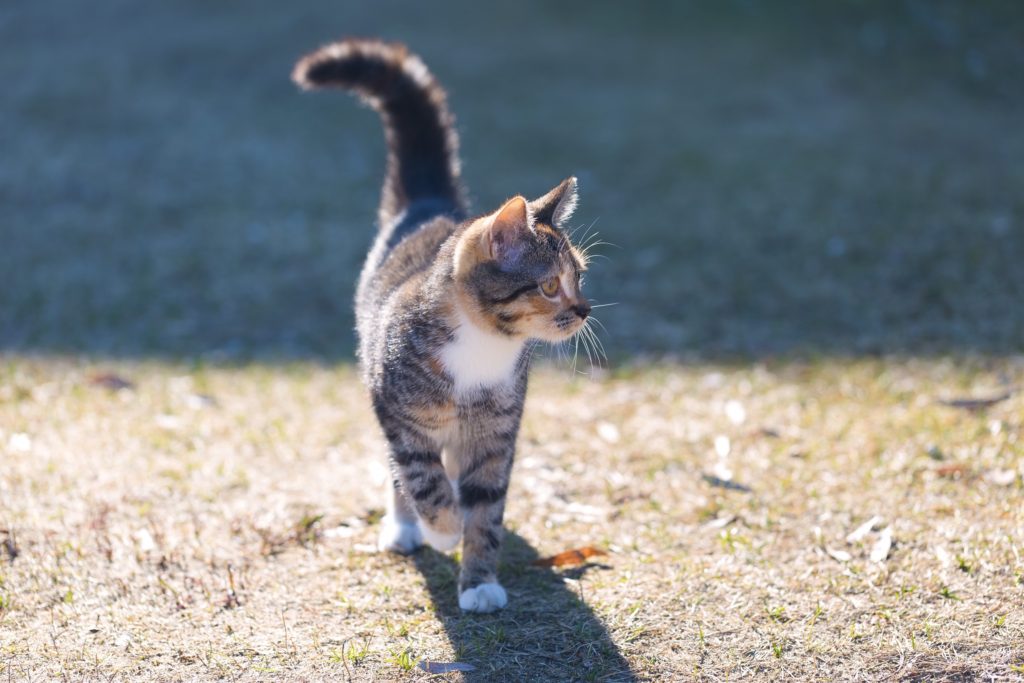
Cats that live indoors rely on playtime to ensure they have enough exercise. It can be great fun and excellent for bonding time for you and your cat. We have a whole article dedicated to playing with your cat, ’18 games to play with your cat’. The article explains why play is important, how to play with your cat and 18 different games to keep your cat amused.
Other articles that your may find interesting:
How to keep your cat happy – 10 key factors
8 common feeding problems in cats and how to solve them
How much water does a cat need?


